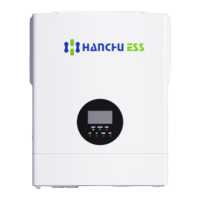What to do if HANCHU ESS Inverter shows bypass overload protection or inverting overload protection?
- LLisa ThomasAug 6, 2025
If your HANCHU ESS Inverter indicates bypass overload or inverting overload protection, try the following: 1) Reduce the power consumption of connected devices. 2) Restart the all-in-one machine. This should restore the load output.

